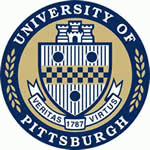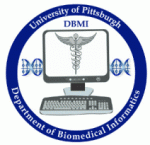![]()

Call for Art & Science Exhibition Proposals - ISMB 2014
**Call for Arts and Science Submission Site* Opens October 14, 2013
Chair: Milana Frenkel-Morgenstern, Spanish National Cancer Research Center, Madrid, Spain
The Art & Science Exhibition is an event organized by the ISCB Student Council, a student-led section of ISCB whose mission is the development of the next generation of computational biologists.
The conference will bring together scientists from a wide range of disciplines, including biology, medicine, computer science, mathematics and statistics. In these fields we are constantly dealing with information in visual form: from microscope images and photographs of gels to scatter plots, network graphs and phylogenetic trees, structural formulae and protein models to flow diagrams, visual aids for problem-solving are omnipresent. Some of the works of the annual exhibitions at the conference combines outstanding beauty and aesthetics with deep insight that perfectly proves the validity of our approach or goes beyond the problem's solution. Others were surprising and inspiring through the transition from science to art, opening our eyes and minds to reflect on the work that we are undertaking.
For the Art & Science Exhibition the organizers invite all interested conference attendees (hereafter referred to as "artists") to submit such images and videos ("artworks") that have been generated as part of a research project. They are also soliciting images and videos resulting from creative efforts that involve scientific concepts or employ scientific tools and methods.
Participate in this exciting event to surprise and inspire us, to open our eyes and minds.
| Deadlines | ||||||||||||
|
||||||||||||
Milana Frenkel-Morgenstern (Chair)
Alaa Abi-Haidar
Nils Gehlenborg
Magali Michaut
Venkata Satagopam
All questions pertaining to the Art & Science Exhibition should be directed to This email address is being protected from spambots. You need JavaScript enabled to view it.
The Art & Science Exhibition will take place for the duration of conference. Artists are asked to submit images and videos for this exhibition. Videos will be projected in the exhibition space. Images will be shown both in physical form and some may be chosen for projection as part of a slide show during the conference plenary sessions.
Images presented in physical form and videos will automatically enter a contest for a $200 (USD) award unless the artist indicates during the submission process that the work should be excluded from the contest.
Conference delegates will select the winner of the contest through majority vote based on their personal preference. Each delegate will have one vote.
An artist can be an individual or a group of individuals. Each artist may submit video or images for presentation in physical form and projection. The artist has to indicate during submission of images if the image is to be presented in physical form. If the artist submits multiple images for presentation in physical form there is no guarantee that all images will be displayed based on exhibition space. Space for physical presentation of images is limited and will be assigned on a first-come first-served basis.
The artwork may deal with any theme in science but the organizers are particularly interested in work that is reflecting on topics related to Computational and Molecular Biology. While artistic freedom is a primary concern of the organizers the nature of the event requires certain restrictions on the content of the artwork. Artwork that contains sexual, political or religious themes cannot be accepted into the exhibition and will be rejected. Works created for commercial purposes will also be rejected.
The final artwork has to be submitted for review before the deadline through the online submission system. Together with the artwork a brief description of the work has to be submitted as well as a title for the work. The description must not be longer than 150 words.
Videos have to be in MPEG format only and no more than 4 minutes long. The file size of the video must not exceed 100 MB. It must be possible to decode videos with standard software. The maximum resolution for videos is 1024x768 pixels. Videos may include sound.
Images to be presented in physical form must be smaller than 43 x 43 (109.2 cm x 109.2 cm). They must not be deeper than 0.5 (1.2 cm) and must be attachable to a poster board using velcro. The organizers recommend to leave a sufficiently wide border around the artwork and to carefully consider the size of photos and the amount of detail included in images. All images must be submitted in their final form and resolution. In case of images employing non-digital media a high-resolution digital photo of the artwork has to be submitted. Images can be submitted in PNG, JPEG, GIF, TIFF or PDF format. The file size must not exceed 25 MB. Accepted works must be provided by the artist for inclusion of the show. (The conference organizers will not print the art works) For projection images will be scaled down to a resolution of 1024x768 pixels. The aspect ratio will be maintained. The organizers recommend keeping this in mind when designing images that are submitted for projection only.
All submitted artwork will be reviewed for compliance with content restrictions as well as technical requirements. Artwork out of compliance will be rejected. Furthermore, the organizers reserve the right to reject artwork for any reasons.
The artist must be holding the copyrights for all parts of the artwork or have permission from the copyright holders to use their works. Copyright holders other than the artist must be attributed accordingly in the abstract accompanying the artwork.
By submitting artwork to the Art and Science Exhibition the artist gives permission to the International Society for Computational Biology (ISCB) to display this work and reproductions thereof during the conference and in materials associated with this and future ISCB events, such as program booklets, (electronic) newsletters, promotional brochures and websites.
Video examples
http://accad.osu.edu/research/scientific_visualization_htmls/dancingDNA.htm
http://www.weizmann.ac.il/sb/faculty_pages/Sussman/movies/richardnew.mpg
Image Examples
ISMB 2010 - First Prize
Anastasia Baryshnikova
University of Toronto, CANADA
Michael Constanzo, Chad Myers, Brenda Andrews, Charles Boone
The Genetic Landscape of a Cell
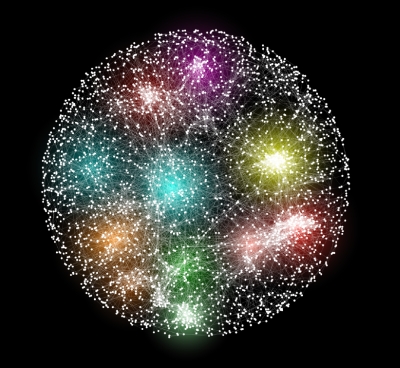
ISMB/ECCB 2009 - First Prize
IIMCB Warsaw, GERMANY
Twenty Characters
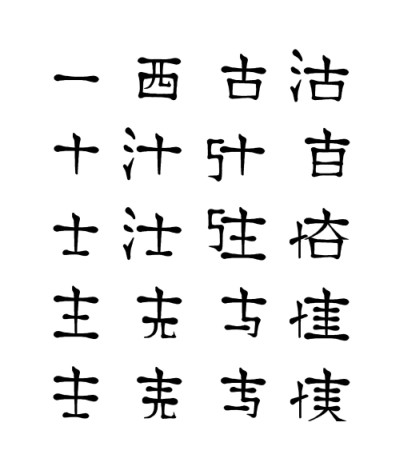
ISMB 2008 -first prize
Mr. Jared Flatow
Northwestern University, USA
A Portrait of James D. Watson in his own Words
http://www.iscb.org/ismb2008/ismb2008_includes/images/vrs/3225.pdf
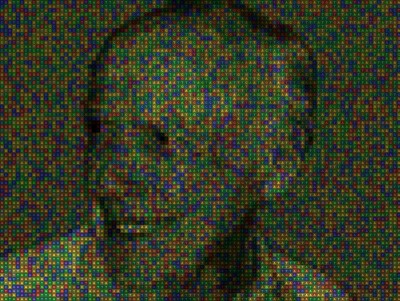
Call for Highlights - ISMB 2014
Highlights Track Chairs: Burkhard Rost, Technical University Munich, Germany;
Reinhard Schneider, University of Luxembourg
Highlights Track Submission Site - Opens October 14, 2013
Highlights Track: About
Highlights Track: Deadlines
Highlights Track: Review Criteria
Highlights Track: Submission Guidelines
The Highlights Track was introduced at ISMB/ECCB 2007 in Vienna, and immediately ranked as one of the top three events in the popularity, behind Keynotes and Special Sessions. Since its introduction it continues to be one of the most popular conference tracks.
We invite the submission of full papers that have been published, or accepted for publication, between January 1, 2013 and the submission deadline, February 28, 2014. Publications that are "in press" and already linked on the journal web site by February 28, 2014 are also welcome. A group of experts will select the papers to be presented at the meeting considering the impact of the work on the field, the likelihood that the work will make a good presentation, and the relevance to biomedical research, in general. Accepted presenters for the Highlights Track are required to make the presentation themselves, and must register and pay to attend the conference.
Submissions should include a 250-word Scientific Justification (abstract-like argument) that explains how the work of the submitted paper(s) is impacting the field. More details are given below.
| Highlights Track Deadlines | ||||||||||||
|
||||||||||||
All submissions will be evaluated by a group of editors. Upon submission, the authors will identify the editor/expert most suitable to suitable to review their work.
All papers published in peer-review journals (no book chapters) between January, 2013 and February 28, 2014 are eligible to be presented as talks. Papers in press are acceptable only if already available through the journal web site. Note that presenters are be encouraged to also present more recent work, however, that work will not be considered in the decision. Up to 2 papers can be submitted as one single PDF if the authors intend to present the results of multiple qualifying papers.
The editors will notify authors of the acceptance no later than Friday, April 4, 2014.
The selected Highlights will be presented in tracks that run in parallel at the conference. All presentations will have to be completed within 20 minutes and will be followed by 5-minute discussions. While presenters will focus on the chosen paper(s), presentations of more recent results are strongly encouraged. In fact, closed stories that conclude with a particular publication not bearing follow up perspectives might not constitute the best Highlight presentations.
top
All submissions will be evaluated by a group of editors to be named, and judged according to the following criteria:
- Relevance, interest, and value of the topic to conference attendees,
- Impact of the paper(s) on biology/medicine (while the impact of papers on science is not fully reflected by ISI/Google-like impact factors or high number of downloads, high values in such factors will clearly stand as a strong argument for acceptance),
- "Presentability" of the work to a large, diverse audience,
- Quality of oral presentations by the submitter (if known),
- Submissions that permit the presentation of related interesting unpublished new results will be viewed favorably.
These "soft" criteria attempt to capture the underlying goal of the Highlights Track, namely the presentation of exciting and thought-provoking seminars that will both contribute to the success of the conference and to the impact the meeting has on advancing computational biology and bioinformatics.
PDF files of the papers, the 250-word Scientific Justification (support abstract) and a 150-word presentation description must be submitted through the automated system by February 28, 2014 (midnight by any time zone). No exceptions will be allowed.
Submissions must be made to the automatic Highlights Track Submissions Site.
Submissions should include the following:
- For each presenter only one submission to the Highlights Track will be reviewed (the LAST will be taken by default). The same limitation applies for the last author (group). Publications can be grouped if it becomes clear how different publications will be combined in a talk. The maximal number of submissions per author/co-author is 5.
- Name/affiliation/email of submitter (assumed to be the presenter; note that the presenter cannot be changed because the identity and ability to present of that person will be an essential selection criterion).
- Names/affiliations/email of ALL coauthors (note: any name appearing on a published paper has to be added here). Note that all co-authors have to agree to the submission. It is the responsibility of the submitter to guarantee that all co-author email addresses are correct (email notifications of the submission will be sent to all co-authors).
- 150 word description of the presentation for promotion on conference website.
- Additional contact information (for presenter).
- 250-word limited abstract-like argument that explains the impact and importance of this work.
- Sources of original publication(s) (Year, Journal, Vol., pages).
- PDF with paper(s) (note: in case of the submission of 2 papers, both should be merged into one single PDF; all reviews will be based on the content of this PDF).
- Optional: link to Google Video demonstrating presentation skills of presenter.
- Only PDF submissions are acceptable. The submission system is currently unable to handle ASCII, Word, LaTeX, or anything other than standard PDF. It is the responsibility of the submitter to verify that the PDF is completely viewable/printable by all major operating systems (LINUX, MacOS, Windows).
All questions pertaining to the Highlights Track should be directed to: This email address is being protected from spambots. You need JavaScript enabled to view it.
top
Call for Late Breaking Research Track Proposals - ISMB 2014
Ioannis Xenarios, Swiss Institute of Bioinformatics (SIB) & University of Lausanne, Switzerland
Late Breaking Research Track Submissions - Opens: Closed March 28, 2014
ISMB 2014 will bring together Bioinformaticians and Computational Biologists working in a wide range of disciplines, including molecular biology, biology, medicine, computer science, mathematics and statistics.
The LBR Track provides authors an opportunity to submit late breaking research to ISMB delegates. Presentations run in parallel to other conference sessions and presenters will be given a 20-minute time slot (plus 5 minutes for questions) in the conference schedule to provide a summary and update to their work.
| Key Dates | ||||||||||||
|
||||||||||||
Submissions and evaluation criteria:
Authors are to provide a 2 page, total, extended abstract of their work, including one (1) figure (11pt font, 1.5-inch margins). References can be included in the two pages. Submitters may choose to provide a link to a short (<=5min) video (eg. youtube) of them presenting their work, to assess presentation skills. Submissions will also be evaluated on the potential for an excellent and interesting presentation. Significance, interest to the bioinformatics community, and biological/medical impact would be the key evaluation criteria. Each submitter must provide a title, a short one (1) paragraph public abstract for inclusion in the electronic conference program and website. A one or two (1 or 2) sentence summary of novelty and significance of the work is to be included. During the submission process you will be able to confirm if your work will also to be presented as a poster.
For more information please contact: This email address is being protected from spambots. You need JavaScript enabled to view it.
CALL FOR LATE POSTERS – ISMB 2014
Poster Chair: Yana Bromberg, Rutgers, The State University of New Jersey, USA
**Submission Site Closes April 18, 2014
The organizers of ISMB 2014 invite all interested participants and conference attendees to consider presenting a poster.
| Deadlines | ||||||||||||
|
||||||||||||
ISMB 2014 will bring together scientists from a wide range of disciplines, including molecular biology, biology, medicine, computer science, mathematics and statistics. We are soliciting high-quality research posters in any aspect of computational biology.
Posters are intended to convey a scientific result and are not advertisements for commercial software packages. There will be a separate space for Industry Posters in the exhibition area - to learn more about Industry Posters contact This email address is being protected from spambots. You need JavaScript enabled to view it.. A poster that is judged by the conference organizers to be an advertisement will be subject to removal without notice.
Posters submitted may cover any area of computational biology. We also encourage submission of purely experimental work and experimental posters should be submitted to the category (noted below) most accurately reflecting the area of this work and will be displayed accordingly. Posters must include original work that is unpublished or published after August 1, 2013.
Submitted Late Posters will be reviewed by the poster selection committee and notification of acceptance will be provided to the corresponding author no later than May 9, 2014.
Posters submitted as part of the Call for Late Poster submission process (opening March 17, 2014) will pay a non-refundable Late Poster Fee of $50 during the submission process.
Poster authors submitting as part of the Call for Late Posters are NOT eligible to apply for a Conference Travel Fellowship Support. All poster abstracts must be submitted using the conference submission site by the abstract deadline: Friday, April 18, 2014 (You have until 11.59 p.m. in the time zone of your choice). Space for posters is limited, and while we will make every effort to accommodate all interested groups, we advise you to submit your poster well before the deadline.
Posters submitted by the April 18, 2014 deadline will be notified of acceptance by Friday, May 9, 2014. You must submit a 250 word poster abstract that will be included in the electronic conference program and posted on the conference web site. The abstract should not contain your title/position or any personal information (e.g. affiliation). There is a maximum of one poster per presenting author. The presenting author of a poster must be registered delegate and be available at the poster session to which their poster is assigned. Any author may submit to various conference tracks in addition to submitting a poster for review.
Odd Numbered posters:
On display Sunday, July 13, 10:00 a.m. through Monday, July 14, 2:30 p.m.
Author presentations will take place Sunday, July 13: 5:45 p.m. - 7:30 p.m.
Even Numbered posters:
On display Monday, July 14, 4:30 p.m. through Tuesday, July 15, 2:30 p.m.
Author presentations will take place Monday, July 17: 5:45 p.m. - 7:30 p.m.
Poster Sessions with Authors are held 5:45 p.m. - 7:30 p.m. on Sunday, July 13 (odd numbered posters) and Monday, July 14 (even numbered posters). Authors should be prepared in advanced to be available to present on their assigned day. Please note due to the large number of posters we are unable to accept special requests for presentation dates.
Poster Display Size: When preparing accepted posters please note that your poster should not exceed the following dimensions: 46 inches wide by 45 inches high. There will be 2 posters per side on the each poster board. One poster will be an odd number and the other will be an even number. View a diagram of the the poster board in pdf format here.
The conference organizers will not offer tables for laptop computer demos during the poster session. If you would like to demonstrate your software, you are encouraged to submit an application for Technology Track. All abstracts will be considered a "personal communication" to the conference attendees. Abstracts will not be published in the proceedings, but will appear in the program and on the conference website.
Submitted posters will be reviewed and categorized into the following general areas:
Bioinformatics of Disease and Treatment
- Computational approaches to the study of disease predisposition, progression and treatment
Computational aspects
- Only TECHNICAL posters should be included here
Comparative Genomics
- The study of the relationship of genome structure and function across different biological species or strains
Education
- The examination of how different models of learning and educational programming in bioinformatics (e.g. tutorials, workshops, courses and e-learning) can be used to impact the understanding and use of bioinformatics across different audiences.
Epigenetics
- The study of heritable changes in gene expression or cellular phenotype caused by mechanisms other than changes in the underlying DNA sequence
Functional Genomics
- The study of whole organism level gene and protein quantities, functions and interactions
Genome Organization and Annotation
- The annotation of genome components' functions and spatial localizations
Genetic Variation Analysis
- Detection, qualification, and annotation of genetic variants and their effects
Metagenomics
- The study of genetic material recovered directly from environmental samples
Pathogen informatics
- The study of viral/microbial/phage genomes with respect to host-pathogen interactions
Population Genetics, Variation and Evolution
- The study of allele variance and distribution and their change under the influence of evolutionary processes
Protein Structure and Function Prediction and Analysis
- Computational approaches to the prediction and annotation of protein structure, function, and their relationships
Proteomics
- The study of proteins structures and functions, often via protein purification and mass spectrometry techniques
Sequence Analysis
- The analysis of DNA, RNA or peptide sequences to understand their features, function, structure, or evolution
Systems Biology and Networks
- The study of complex component interactions within biological systems
Public Institutions (Not for profit) are able to submit their research findings as part of the call for posters. This will be displayed with in the topic area of Institutional Research
Individuals may choose to submit a poster presenting a review of a specific field or technique. These submissions do not need to contain original work from the author and are intended to be an introduction for individuals not familiar with the field or technique. These review are not meant to be advertisements (e.g. it is not acceptable that the poster is an advertisement for a book or other type of commercial publication)
All questions pertaining to the ISMB 2014 poster session should be directed to: This email address is being protected from spambots. You need JavaScript enabled to view it.
CALL FOR POSTERS – ISMB 2014
Poster Chair: Yana Bromberg, Rutgers, The State University of New Jersey, USA
Submissions are closed as of March 14, 2014
The organizers of ISMB 2014 invite all interested participants and conference attendees to consider presenting a poster.
| Deadlines | ||||||||||||
|
||||||||||||
ISMB 2014 will bring together scientists from a wide range of disciplines, including molecular biology, biology, medicine, computer science, mathematics and statistics. We are soliciting high-quality research posters in any aspect of computational biology.
Posters are intended to convey a scientific result and are not advertisements for commercial software packages. There will be a separate space for Industry Posters in the exhibition area - to learn more about Industry Posters contact This email address is being protected from spambots. You need JavaScript enabled to view it.. A poster that is judged by the conference organizers to be an advertisement will be subject to removal without notice.
Posters submitted may cover any area of computational biology. We also encourage submission of purely experimental work and experimental posters should be submitted to the category (noted below) most accurately reflecting the area of this work and will be displayed accordingly. Posters must include original work that is unpublished or published after August 1, 2013.
Submitted posters will be reviewed by the poster selection committee and notification of acceptance will be provided to the corresponding author no later than Friday, April 11, 2014.
A select number of accepted posters will receive an opportunity to complete a short oral presentation (approximately 8 minutes) during the conference parallel tracks in addition to their poster being displayed during the poster sessions. Posters nominated by at least one of the judges for oral presentation in the first round of review, will automatically be reviewed by additional members of the review panel. Posters amassing the largest number of recommendations will be selected for presentation. Late Posters will not be evaluated for oral poster presentation track.Additional details on presenting in OPT will be provided directly to the authors of the works selected for presentation.
Delegates are encouraged to submit posters to ISMB as part of the early Call for Posters submission process (closing March 14, 2014). Posters submitted after this date as part of the Call for Late Poster submission process (opening March 17, 2014) will pay a non-refundable Late Poster Fee of $50 during the submission process.
Poster authors submitting by March 14, 2014 may be eligible to apply for a Conference Travel Fellowship. All poster abstracts must be submitted using the conference submission site by the abstract deadline: Friday, March 14, 2014 (You have until 11.59 p.m. in the time zone of your choice). Space for posters is limited, and while we will make every effort to accommodate all interested groups, we advise you to submit your poster well before the deadline.
Posters submitted by the March 14, 2014 deadline will be notified of acceptance by Friday, April 11, 2014. You must submit a 250 word poster abstract that will be included in the electronic conference program and posted on the conference web site. The abstract should not contain your title/position or any personal information (e.g. affiliation). There is a maximum of one poster per presenting author. The presenting author of a poster must be registered delegate and be available at the poster session to which their poster is assigned. Any author may submit to various conference tracks in addition to submitting a poster for review.
Odd Numbered posters:
On display Sunday, July 13, 10:00 a.m. through Monday, July 14, 2:30 p.m.
Author presentations will take place Sunday, July 13: 5:45 p.m. - 7:30 p.m.
Even Numbered posters:
On display Monday, July 14, 4:30 p.m. through Tuesday, July 15, 2:30 p.m.
Author presentations will take place Monday, July 17: 5:45 p.m. - 7:30 p.m.
Poster Sessions with Authors are held 5:45 p.m. - 7:30 p.m. on Sunday, July 13 (odd numbered posters) and Monday, July 14 (even numbered posters). Authors should be prepared in advanced to be available to present on their assigned day. Please note due to the large number of posters we are unable to accept special requests for presentation dates.
Poster Display Size: When preparing accepted posters please note that your poster should not exceed the following dimensions: 46 inches wide by 45 inches high. There will be 2 posters per side on the each poster board. One poster will be an odd number and the other will be an even number. View a diagram of the the poster board in pdf format here.
Submissions received after March 14, 2014 will be considered for the late poster acceptance. Posters submitted and accepted as part of the Call for Late Poster (opens March 17, 2014) are NOT eligible to apply for Conference Travel Fellowship Support.
The conference organizers will not offer tables for laptop computer demos during the poster session. If you would like to demonstrate your software, you are encouraged to submit an application for Technology Track. All abstracts will be considered a "personal communication" to the conference attendees. Abstracts will not be published in the proceedings, but will appear in the program and on the conference website.
Submitted posters will be reviewed and categorized into the following general areas:
Bioinformatics of Disease and Treatment
- Computational approaches to the study of disease predisposition, progression and treatment
Computational aspects
- Only TECHNICAL posters should be included here
Comparative Genomics
- The study of the relationship of genome structure and function across different biological species or strains
Education
- The examination of how different models of learning and educational programming in bioinformatics (e.g. tutorials, workshops, courses and e-learning) can be used to impact the understanding and use of bioinformatics across different audiences.
Epigenetics
- The study of heritable changes in gene expression or cellular phenotype caused by mechanisms other than changes in the underlying DNA sequence
Functional Genomics
- The study of whole organism level gene and protein quantities, functions and interactions
Genome Organization and Annotation
- The annotation of genome components' functions and spatial localizations
Genetic Variation Analysis
- Detection, qualification, and annotation of genetic variants and their effects
Metagenomics
- The study of genetic material recovered directly from environmental samples
Pathogen informatics
- The study of viral/microbial/phage genomes with respect to host-pathogen interactions
Population Genetics, Variation and Evolution
- The study of allele variance and distribution and their change under the influence of evolutionary processes
Protein Structure and Function Prediction and Analysis
- Computational approaches to the prediction and annotation of protein structure, function, and their relationships
Proteomics
- The study of proteins structures and functions, often via protein purification and mass spectrometry techniques
Sequence Analysis
- The analysis of DNA, RNA or peptide sequences to understand their features, function, structure, or evolution
Systems Biology and Networks
- The study of complex component interactions within biological systems
Public Institutions (Not for profit) are able to submit their research findings as part of the call for posters. This will be displayed with in the topic area of Institutional Research
Individuals may choose to submit a poster presenting a review of a specific field or technique. These submissions do not need to contain original work from the author and are intended to be an introduction for individuals not familiar with the field or technique. These review are not meant to be advertisements (e.g. it is not acceptable that the poster is an advertisement for a book or other type of commercial publication)
All questions pertaining to the ISMB 2014 poster session should be directed to: This email address is being protected from spambots. You need JavaScript enabled to view it.


